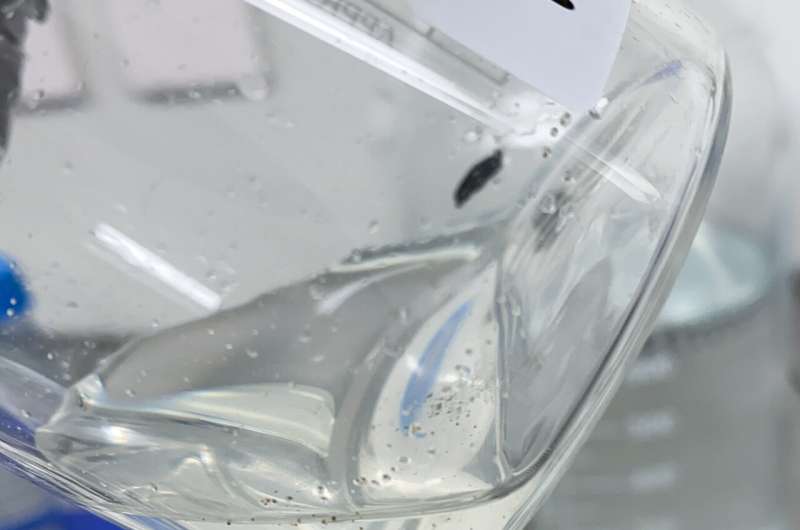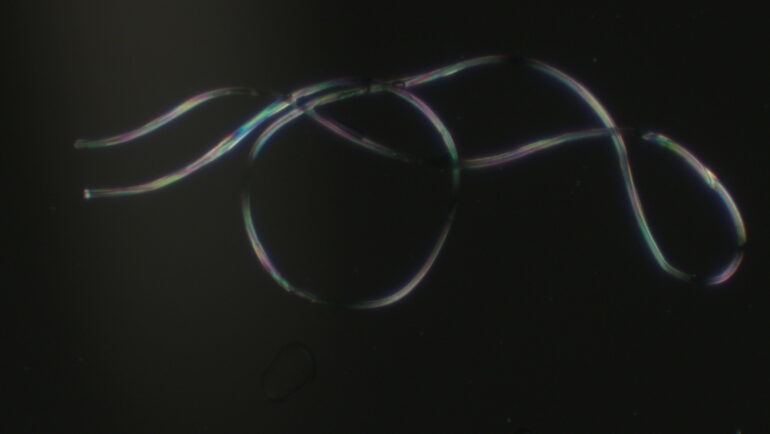As nations meet in Uruguay to negotiate a new Global Plastics Treaty, marine and forensic scientists publish new results this week that reveal the discovery of synthetic plastic fibers in air, seawater, sediment and sea ice sampled in the Antarctic Weddell Sea. The field research was undertaken during an expedition to discover Sir Ernest Shackleton’s ship, the Endurance. The results are published in the journal Frontiers in Marine Science.
Fibrous polyesters, primarily from textiles, were found in all samples. The majority of microplastic fibers identified were found in the Antarctic air samples, revealing that Antarctic animals and seabirds could be breathing them.
“The issue of microplastic fibers is also an airborne problem reaching even the last remaining pristine environments on our planet,” stated co-author Professor Lucy Woodall, University of Oxford, Nekton Principal Scientist. “Synthetic fibers are the most prevalent form of microplastic pollution globally and tackling this issue must be at the heart of the Plastic Treaty negotiations.” Professor Woodall was the first to reveal the prevalence of plastic in the deep sea in 2014.
A modeling analysis of air trajectories revealed that areas with higher numbers of fibers were associated with winds coming from southern South America. The discovery reveals that the Antarctic Circumpolar Current and the associated polar front is not, as previously thought, acting as an impenetrable barrier which would have prevented microplastics from entering the Antarctic region.
“Ocean currents and winds are the vectors for plastic pollution to travel across the globe and even to the remotest corners of the world,” shared Nuria Rico Seijo, Nekton Research Scientist, Oxford, the co-lead author of the research. “The transboundary nature of microplastics pollution provides more evidence for the urgency and importance of a strong international plastic pollution treaty.”
The concentration of microplastics was also discovered by the team to be far higher in sea ice than in other sample types. Research indicates that microplastics are being trapped during the creation of the sea-ice layer every year.
“Sea ice is mobile, can travel vast distances and reach the permanent ice shelves of the Antarctica continent where it can be trapped indefinitely with its gathered microplastic pollutants,” shared Dr. Mánus Cunningham, Nekton Research Scientist, Oxford, the co-lead author of the research. “We believe the acquisition of microplastics in the multi-year sea ice combined with its seasonal changes could also be considered a temporary sink and one of the main transporters of microplastics within the Antarctic region,” concluded Dr. Cunningham.

Density separation process during microplastics analysis of samples from Weddell Sea Expedition. © Nekton
Extensive research was also conducted on sediment samples



